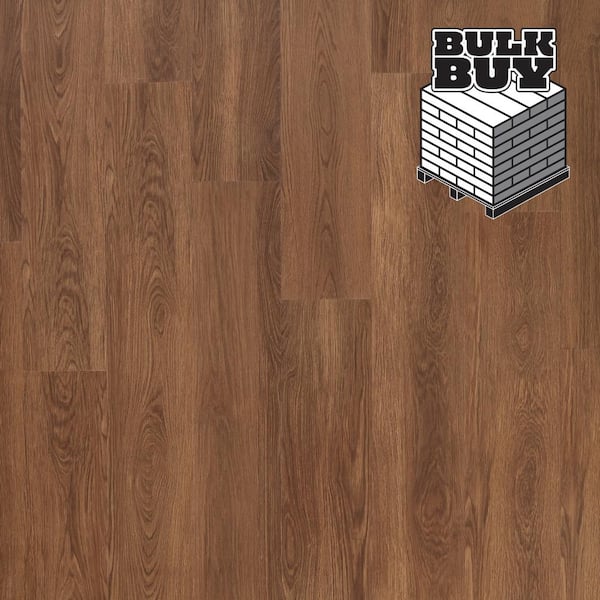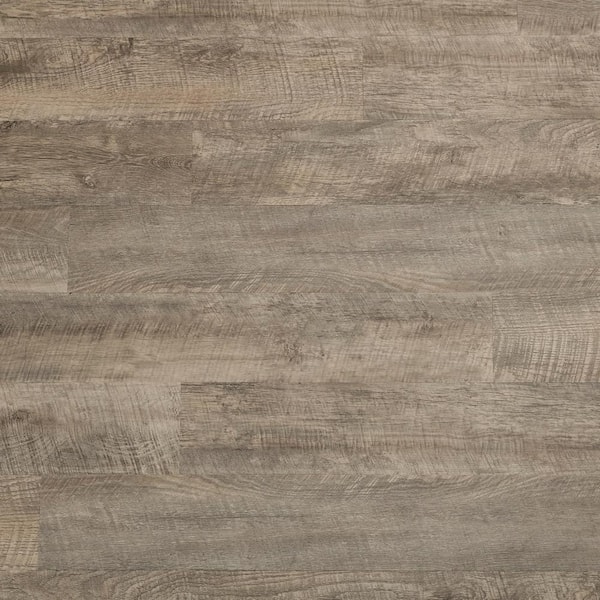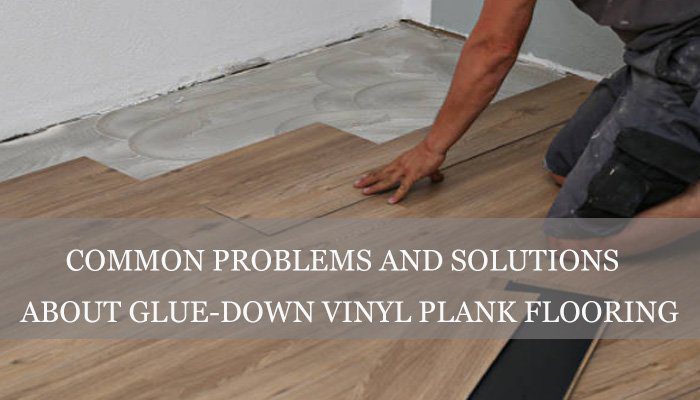Problems with glue-down vinyl plank flooring include adhesion issues and potential damage to subfloor. Proper installation is crucial to prevent problems.
Glue-down vinyl plank flooring is a popular choice for homeowners due to its durability and easy maintenance. However, improper installation can lead to several issues that may affect the longevity and appearance of the flooring. Adhesion problems, such as peeling or buckling, can occur if the adhesive is not applied correctly or if the subfloor is not properly prepared.
Additionally, using the wrong type of adhesive can result in a weak bond between the planks and the subfloor, leading to loose or unstable flooring. Understanding these common problems and ensuring proper installation can help homeowners enjoy the benefits of glue-down vinyl plank flooring for years to come.

Credit: www.homedepot.com
Common Issues With Glue-down Vinyl Plank Flooring
Glue-down vinyl plank flooring may encounter common issues including adhesive failure, resulting in loose or lifting planks, and difficulty in replacing damaged pieces. Additionally, the flooring may show signs of peeling and bubbling due to poor installation or surface preparation.
Regular inspections and proper maintenance can help prevent these problems.
The primary issue with glue-down vinyl plank flooring is subpar adhesion to the subfloor.
Inferior adhesion can lead to the planks coming loose and creating a noisy, unstable floor.
It can also result in uneven surfaces and gaps between the planks, compromising the overall aesthetic.
Another common concern is moisture-related problems that can arise with glue-down vinyl plank flooring.
Excessive moisture can cause the adhesive to weaken, leading to planks lifting or buckling.
Moisture seepage can also damage the subfloor and promote mold and mildew growth.
It is essential to address these issues during the installation process to ensure a durable and visually appealing vinyl plank flooring system.
Subpar Adhesion
Subpar Adhesion can lead to several issues when it comes to glue-down vinyl plank flooring installation. Let’s delve into the reasons behind this common problem.
Improper Surface Preparation
Subpar surface preparation can cause the adhesive to not bond correctly, leading to the vinyl planks not adhering properly.
Low-quality Adhesive
Using a low-quality adhesive can result in poor adhesion, causing the vinyl planks to come loose over time.
Moisture-related Problems
Vinyl plank flooring may encounter adhesive issues due to humidity, leading to buckling or lifting problems. Moisture-related concerns can weaken the glue bond, causing the planks to detach over time. Proper moisture testing and ensuring ideal room conditions are essential for long-lasting glue-down vinyl flooring.
Water Damage
When water penetrates the seams of glue-down vinyl plank flooring, it can lead to costly and extensive damage. The adhesive used in the installation can trap moisture, promoting the growth of mold and mildew. In addition, water can cause the planks to warp, leading to a compromised and unattractive flooring surface.
High Humidity Levels
Excessive humidity levels in the environment can also pose a significant threat to glue-down vinyl plank flooring. Elevated moisture levels can result in the expansion and contraction of the planks, causing them to buckle or separate at the seams. This not only affects the aesthetics of the floor but also compromises its structural integrity.

Credit: www.homedepot.com
Fixing Issues With Glue-down Vinyl Plank Flooring
Glue-down vinyl plank flooring is a popular choice due to its durability and easy installation process. However, like any flooring option, it can encounter some issues over time. In this blog post, we will focus on two common problems – loose planks and moisture – and discuss effective solutions to help you maintain the longevity and beauty of your vinyl plank flooring.
Repairing Loose Planks
One of the most common issues with glue-down vinyl plank flooring is loose planks. This can occur due to a variety of reasons, such as improper installation or wear and tear over time. It’s essential to address loose planks promptly to prevent further damage and ensure a safe walking surface.
To repair loose planks in your glue-down vinyl flooring, follow these simple steps:
- Identify the loose plank by gently pressing down on it. If it moves or creates a gap between the neighboring planks, it needs to be fixed.
- Apply a small amount of vinyl floor adhesive onto the exposed subfloor using a putty knife, ensuring the area is clean and free from any debris.
- Press the loose plank firmly into place, making sure it aligns correctly with the surrounding planks. Apply pressure using a floor roller or a heavy object to ensure proper adhesion.
- Allow the adhesive to dry completely before walking on the repaired plank, typically for around 24 hours.
Addressing Moisture Problems
Moisture can pose significant problems for glue-down vinyl plank flooring, leading to warping, cupping, and overall damage. It’s crucial to address any moisture issues promptly to maintain the integrity of your flooring and prevent costly repairs or replacements down the line.
Here are some steps you can take to address moisture problems:
- Identify the source of moisture, such as leaks or high humidity levels in your space. Fix any underlying issues before proceeding with the flooring repairs.
- Remove any damaged planks or affected areas of the vinyl flooring, ensuring you have a clean and dry subfloor to work with.
- Depending on the extent of the moisture damage, you may need to repair the subfloor as well. Ensure it is dry and in good condition before proceeding.
- Once the subfloor is ready, apply a moisture barrier, such as a waterproof underlayment, to protect your vinyl plank flooring from future moisture-related problems.
- Install new vinyl planks or patch up the damaged areas using adhesive suitable for moisture-prone environments.
- Allow the adhesive to cure according to the manufacturer’s instructions before resuming normal foot traffic.
By following these steps, you can effectively address loose planks and moisture problems in your glue-down vinyl plank flooring, ensuring its longevity and appearance for years to come. Remember that proper maintenance, regular inspections, and immediate repairs are key to keeping your flooring in optimal condition.
Preventive Measures
To prevent problems with glue down vinyl plank flooring, ensure proper subfloor preparation, use recommended adhesives, and acclimate the flooring beforehand. Regularly inspect for damage and address any issues promptly to maintain the integrity of the installation.
When it comes to glue down vinyl plank flooring, it’s important to take preventive measures to ensure a successful installation and avoid potential problems down the line. Proper subfloor preparation and choosing the right adhesive are crucial factors that can make or break your installation. Let’s explore these preventive measures in more detail:
Proper Subfloor Preparation
Before installing glue down vinyl plank flooring, it’s essential to properly prepare the subfloor. Here are some steps you can follow:
- Ensure that the subfloor is clean, dry, and free from any debris or protrusions. This will help the adhesive bond securely with the subfloor.
- Repair any cracks or uneven areas in the subfloor. Use a suitable filler and leveler to create a smooth surface for installation.
- Check the moisture levels of the subfloor using a moisture meter. Ideally, the moisture content should be within the recommended range specified by the manufacturer.
- If the subfloor has excessive moisture, take appropriate measures to mitigate it, such as using a moisture barrier or applying a suitable moisture control system.
Choosing The Right Adhesive
Choosing the right adhesive is crucial for a successful glue down vinyl plank flooring installation. Here are some factors to consider:
- Make sure to use an adhesive specifically designed for vinyl plank flooring. Using the wrong type of adhesive can lead to bonding issues and compromised installation.
- Consider the type and condition of the subfloor when selecting the adhesive. Some adhesives work better on certain subfloor materials than others.
- Follow the manufacturer’s recommendations regarding adhesive coverage and spread rate. Applying too little adhesive can result in loose planks, while applying too much can cause adhesive seepage and a messy installation.
- Allow ample curing time for the adhesive before subjecting the floor to heavy traffic or furniture placement. This will ensure a strong bond between the vinyl planks and the subfloor.
By following these preventive measures of proper subfloor preparation and selecting the right adhesive, you can minimize the chances of encountering problems with glue down vinyl plank flooring. Taking these steps will result in a durable and visually pleasing floor that will stand the test of time.

Credit: www.homedepot.com
Frequently Asked Questions For Problems With Glue Down Vinyl Plank Flooring
Can I Install Glue Down Vinyl Plank Flooring On Concrete?
Yes, you can install glue down vinyl plank flooring on concrete. However, make sure the concrete is clean, dry, and level before installation. It’s also important to use the correct adhesive and follow the manufacturer’s instructions for a successful installation.
What Are The Advantages Of Glue Down Vinyl Plank Flooring?
Glue down vinyl plank flooring offers several advantages. It is highly durable, water-resistant, and easy to clean. It also provides a realistic wood or stone look without the high cost. Additionally, glue down installation provides a more stable and secure flooring surface compared to floating installations.
How Long Does Glue Down Vinyl Plank Flooring Last?
With proper installation and maintenance, glue down vinyl plank flooring can last for 15-20 years or more. The lifespan can vary depending on factors such as foot traffic, quality of installation, and maintenance practices. Regular cleaning and avoiding harsh chemicals or excessive moisture can help prolong the life of the flooring.
What Are The Potential Issues With Glue Down Vinyl Plank Flooring?
While glue down vinyl plank flooring is generally durable, there are a few potential issues to be aware of. Poor installation or using the wrong adhesive can result in loosening or curling of the planks over time. Additionally, excessive moisture or humidity can cause adhesive failure or mold/mildew growth.
Proper installation and maintenance are crucial for minimizing these issues.
Conclusion
While glue-down vinyl plank flooring offers durability and affordability, it also presents several challenges. Proper installation, time-consuming removal, and potential damage to subfloors are common issues. Despite these drawbacks, with careful consideration and professional installation, these problems can be effectively managed to ensure a successful and long-lasting flooring solution.


